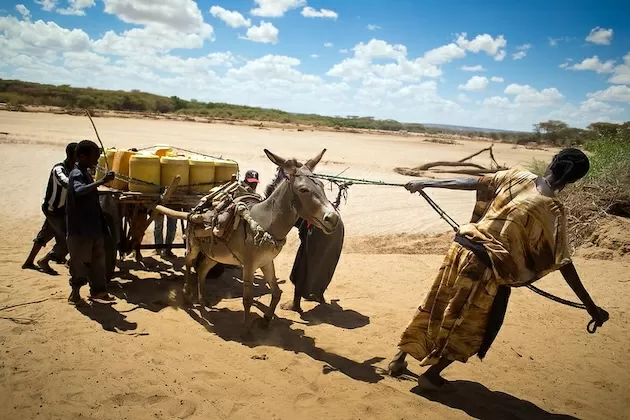Climate change is a global issue that affects every country, regardless of their contribution to the problem. However, for a country like Kenya, the impact of climate change is particularly devastating. Despite being responsible for only 0.1% of global greenhouse gas emissions, Kenya is considered a high-risk country by development banks due to its vulnerability to extreme weather events. This not only puts the country’s development agenda at risk but also threatens the lives and livelihoods of its citizens.
Kenya is a country that heavily relies on agriculture, which is highly dependent on weather patterns. However, in recent years, the country has experienced an increase in extreme weather events such as droughts, floods, and heatwaves. These events have had a significant impact on the country’s agricultural sector, leading to crop failures, loss of livestock, and food insecurity. This, in turn, has a ripple effect on the economy, as agriculture is the backbone of Kenya’s economy, employing over 70% of the population and contributing to a significant portion of the country’s GDP.
Apart from the agricultural sector, extreme weather events also have a direct impact on other key sectors of the economy, such as energy, water, and infrastructure. For instance, prolonged droughts have led to a decrease in hydropower production, resulting in frequent power outages and increased reliance on expensive fossil fuels. This not only affects the cost of living for Kenyans but also hinders the country’s industrialization and economic growth.
Moreover, the increase in extreme weather events also poses a threat to Kenya’s infrastructure, which is essential for the country’s development. Roads, bridges, and other critical infrastructure are often damaged or destroyed by floods and landslides, leading to disruptions in transportation and communication networks. This not only affects the day-to-day lives of citizens but also hinders the country’s progress towards achieving its development goals.
The effects of climate change are not limited to the present but also have long-term implications for Kenya’s future. The country’s coastal areas, which are home to a significant portion of the population and contribute to the tourism industry, are at risk of being submerged due to rising sea levels. This not only puts the lives and livelihoods of millions of people at risk but also threatens the country’s economy, as tourism is a major source of foreign exchange.
It is evident that climate change-related extreme weather events pose a significant threat to Kenya’s development agenda. However, the country is not sitting idly by and letting this problem continue to escalate. The Kenyan government has taken steps to address the issue, such as implementing the National Climate Change Action Plan and establishing the Climate Change Directorate. These efforts aim to reduce the country’s greenhouse gas emissions and increase its resilience to the impacts of climate change.
Furthermore, Kenya has also been at the forefront of promoting renewable energy sources, such as geothermal, wind, and solar power. The country has set a target of achieving 100% renewable energy by 2020, and it is well on its way to achieving this goal. This not only helps to mitigate the effects of climate change but also reduces the country’s reliance on fossil fuels, which contribute significantly to global warming.
In addition to government efforts, there are also various initiatives by non-governmental organizations and community-based organizations to promote climate change adaptation and mitigation in Kenya. These include reforestation projects, sustainable agriculture practices, and disaster risk reduction programs. These initiatives not only help to reduce the country’s vulnerability to extreme weather events but also empower local communities to take action and be part of the solution.
It is also worth noting that Kenya’s efforts to address climate change have not gone unnoticed. The country has received support from various international organizations and development banks, such as the World Bank and the United Nations Development Programme. This support has enabled Kenya to implement various projects and programs aimed at building resilience and reducing greenhouse gas emissions.
In conclusion, climate change-related extreme weather events pose a significant threat to Kenya’s development agenda. However, the country is taking proactive steps to address the issue and build resilience. With the government’s efforts, support from international organizations, and the involvement of local communities, Kenya is on the right track towards mitigating the effects of climate change and achieving its development goals. It is crucial for all stakeholders to continue working together to ensure a sustainable and prosperous future for Kenya.



